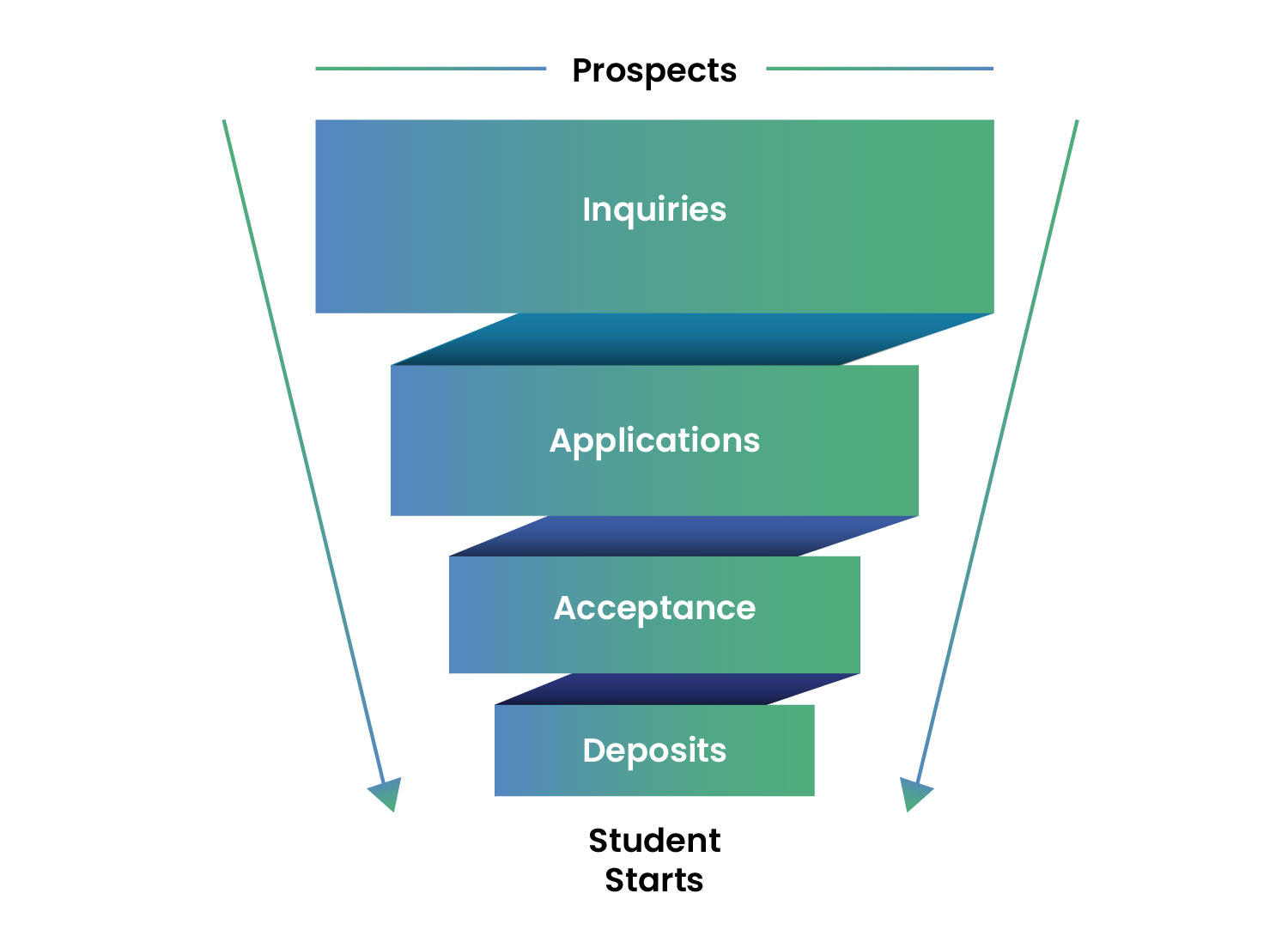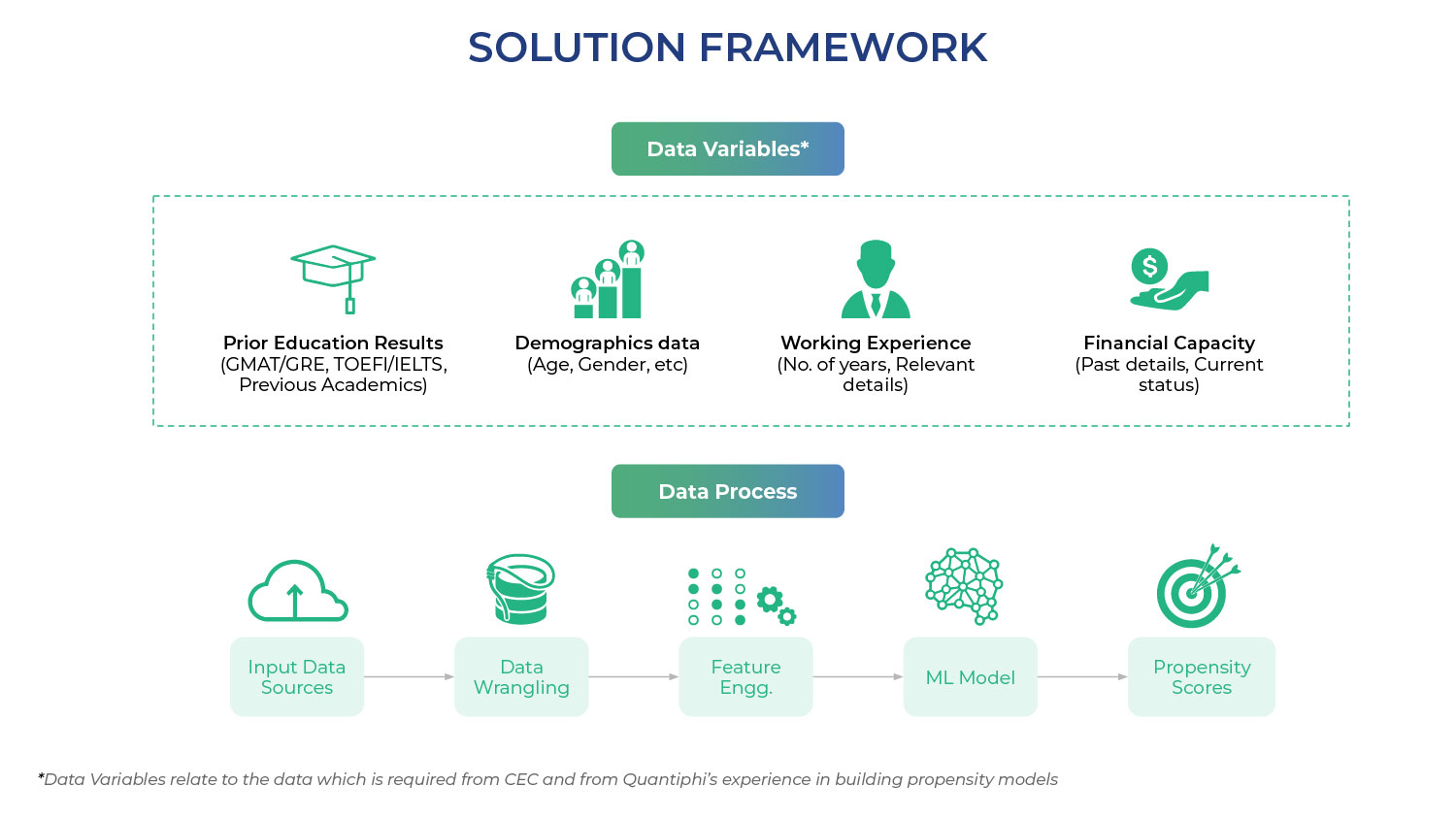Nia is an eighteen-year-old African American high school graduate from Baltimore. With a 3.7 GPA, Nia aims to pursue an undergraduate program in biotechnology and is waiting for a response to her applications to six universities. Nia requires financial aid (need and merit-based) to make her dreams of going to college a reality. Alie is a Caucasian high school graduate from San Francisco with similar aspirations and GPA. Although Alie has applied for scholarships, her family’s financial standing will permit her to pursue her education in college. Unfortunately, the narrow focus of today’s enrollment management systems is found to reduce the amount of scholarship funding offered to students. So, while Alie sets off to realize her academic goals, Nia’s future could still be uncertain.
Effective estimation of student enrollment and recruitment is critical to the success of the admissions process of any university. The fierce competition among colleges and universities to recruit students is further heightened by the growing tide of online programs spurred by the pandemic. The massive volume of incoming student data can make modern student recruitment a challenging task, especially handling hundreds or thousands of leads. It is imperative for colleges to rely on a lead scoring model to qualify prospective students before diving headfirst into expensive marketing and outreach campaigns. This is where enrollment management systems come in handy.

Over 75% of institutions in the United States use enrollment management systems to drive student recruitment. Algorithmic enrollment management systems help institutions cut costs and time in processing thousands of applications every year. However, there are growing concerns that modern enrollment algorithms are designed to only advance the profit-making objectives of universities, and not necessarily to improve their student body. Further, recent evidence suggests that enrollment algorithms are exacerbating the worrying trends of declining enrollment rates, low graduation rates, soaring student debt, and institutional inequality for racial minorities.
“The total college enrollment in Spring 2022 fell to 16.2 million, a 14.7% decline from Fall 2020” - Education Data Initiative, 2022
Before we evaluate how universities can limit bias and use prevailing technologies responsibly to optimize their enrollment management strategies, it is important to understand the current rationale behind enrollment algorithms.
Enrollment Management Systems - How do they tick?
Typically, enrollment management systems follow a two-pronged approach to student recruitment.
- Predicting likelihood to enroll: Enrollment management systems employ predictive algorithms to estimate the likelihood of an accepted applicant enrolling at a specific college. The historic metrics of a college’s past applicants such as high school GPA, standardized test scores, demographic information, place of residence, and amount of financial aid they received are consolidated to drive the prediction. Additional information such as the frequency of attendance at college recruitment events and the percentage of opened college emails is also considered. A predictive model is built using this historical admission data to estimate whether each of the accepted applicants chose to enroll. The model is then employed to predict the likelihood of enrollment for future applicants. The model is also used by financial aid offices to adjust scholarships awarded to evaluate the likelihood of enrollment changes.
- Optimizing for financial, demographic, and scholastic outcomes: Once the prospective students are scored using the yield prediction model, the next step involves optimization of the engagement strategy to drive the best enrollment outcomes as defined by the university. A crucial layer in this step is the scholarship distribution strategy adopted by the university to maximize applicant yield. To do this, universities utilize the precision model, a dataset of newly accepted applicants, and compare several scholarship disbursement strategies before choosing one that results in the preferred incoming cohort for the institution.
In short, enrollment algorithms pursue objectives outlined by the university. The constraints applied to the algorithm govern the nature of its output. Currently, algorithms are working to maximize values - total student yield and total tuition fee paid - to serve institutions alone rather than bolster their student body. Different constraints can impose demographic diversity, such as race or gender, or even necessitate that a certain mix of prospective applicants enrolls.
A Guide To Ethical Enrollment Practices
It is imperative for institutions to adopt a responsible approach to their enrollment strategy and be mindful of the outcomes they want to achieve while using AI.
- Document algorithmic processes: Universities must exhaustively document the processes, goals, principles, data, and algorithms used in their enrollment management. The intended outcomes must be clearly defined before the algorithmic formulation and its implementation should align with the project’s goals and objectives. The documentation should be accessible to all employees engaged in the financial aid process and routine retrospective efforts must be undertaken to assess the algorithm’s performance against the college’s stated goals.
- Examine historical data: A keen consideration and evaluation of a college’s historical data are paramount as it is critical to algorithmic development and by extension, the incoming student cohort. Unfavorable correlations in the data must be eliminated to ensure a responsible future for the college.
- Evaluate student outcomes: College must perform analyses that estimate student success (retention and graduation rates) against scholarship disbursement strategies designed by the optimization algorithms. An algorithmic approach that maximizes a combination of student enrollment and student success metrics would be most desirable.
- Human-in-the-loop evaluation: While an algorithmic approach to enrollment management drives process and cost efficiencies, it is imperative that an additional step for human evaluations of scholarship applications be implemented. Traditional algorithms are trained to award scholarships to academically proficient students but qualitative factors such as extracurricular activities, work experience, and background of the student are overlooked.
Quantiphi’s Enrollment Optimization Solution
Quantiphi is at the forefront of building responsible AI solutions for the education sector. We have leveraged our unique blend of technical and industry expertise, coupled with our steadfast commitment to building a better world with responsible AI to develop an enrollment optimization solution that aligns with the enrollment objectives of institutions in addition to student welfare.
Quantiphi’s lead-scoring model allows universities to input constraints based on their objectives for the incoming student cohort and enables them to target leads based on their propensity scores. The in-house model contributes to significant cost savings compared to those maintained by third-party vendors.

Business Impact:
- Data-driven process optimization
- Reduced marketing expenses
- 83% overall effectiveness and shorter enrollment cycle
- Increased student enrollment and retention
- 5.9% increase in base conversion rate
Get in touch with our experts to know how you can optimize your enrollment management strategy.








